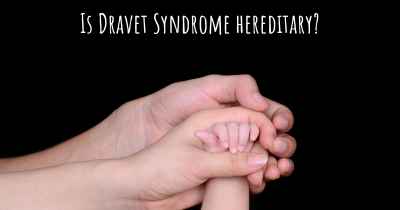What is the history of Dravet Syndrome?
When was Dravet Syndrome discovered? What is the story of this discovery? Was it coincidence or not?

Dravet Syndrome, also known as Severe Myoclonic Epilepsy of Infancy (SMEI), is a rare and severe form of epilepsy that begins in infancy. It was first described by Dr. Charlotte Dravet, a French pediatrician, in 1978. Dr. Dravet observed a group of children who experienced prolonged seizures, fever sensitivity, and developmental delays.
The discovery of Dravet Syndrome:
Dr. Dravet's initial observations led her to believe that these children had a distinct form of epilepsy. She conducted further research and published her findings, bringing attention to this newly identified syndrome. Her work laid the foundation for understanding the unique characteristics and challenges associated with Dravet Syndrome.
Genetic link:
Over the years, researchers discovered that Dravet Syndrome has a strong genetic component. In 2001, mutations in the SCN1A gene were identified as the primary cause of the syndrome. The SCN1A gene provides instructions for producing a protein called sodium channel alpha-1 subunit, which is crucial for the normal functioning of brain cells. Mutations in this gene disrupt the normal activity of sodium channels, leading to the characteristic seizures and other symptoms of Dravet Syndrome.
Recognition and classification:
Dravet Syndrome gained recognition as a distinct epilepsy syndrome in the medical community. It was officially classified as a specific type of epilepsy in 1989 by the International League Against Epilepsy (ILAE). The ILAE recognized the unique clinical features, electroencephalogram (EEG) patterns, and genetic associations of Dravet Syndrome.
Advancements in understanding:
Since its initial discovery, significant advancements have been made in understanding Dravet Syndrome. Researchers have identified additional genes, such as SCN2A and STXBP1, that can also cause similar clinical features. This expanded knowledge has helped refine the diagnosis and classification of Dravet Syndrome.
Treatment and management:
Managing Dravet Syndrome is challenging, as it is a complex and lifelong condition. Antiepileptic medications are often used to control seizures, but they may not be fully effective for all individuals. Other treatment approaches, such as ketogenic diet and vagus nerve stimulation, have shown some promise in reducing seizure frequency.
Support and advocacy:
Over the years, various organizations and support groups have emerged to provide resources, support, and advocacy for individuals and families affected by Dravet Syndrome. These organizations play a crucial role in raising awareness, funding research, and improving the quality of life for those living with the condition.
Ongoing research:
Research into Dravet Syndrome continues to advance our understanding of the condition. Scientists are exploring potential new treatment options, investigating the underlying mechanisms of the disorder, and working towards finding a cure.
In conclusion, Dravet Syndrome has a rich history that began with the observations of Dr. Charlotte Dravet. Through her pioneering work and subsequent research, we have gained valuable insights into the genetic basis, clinical features, and management of this rare and severe form of epilepsy.
Posted Dec 18, 2017 by Antigoni 2500








